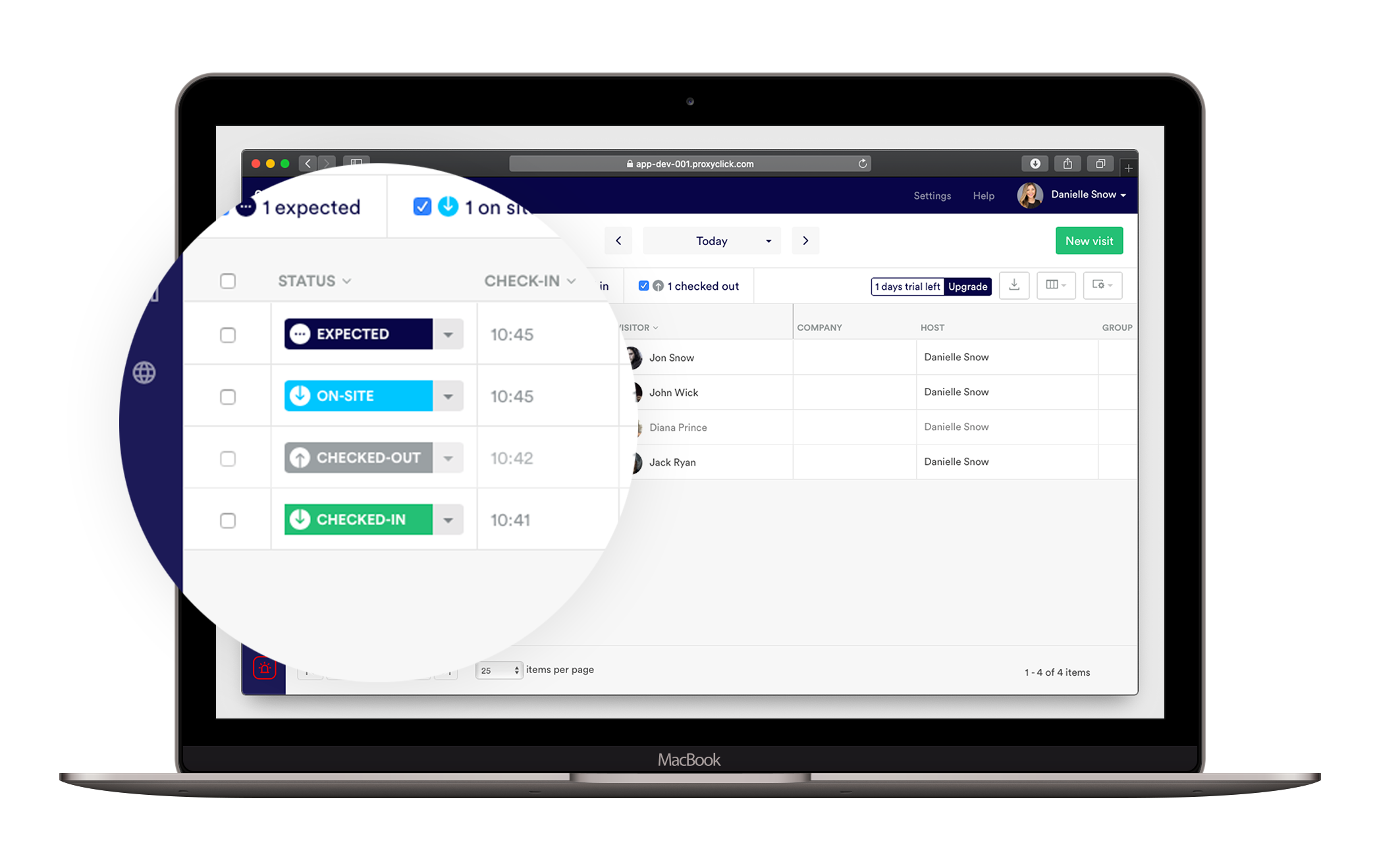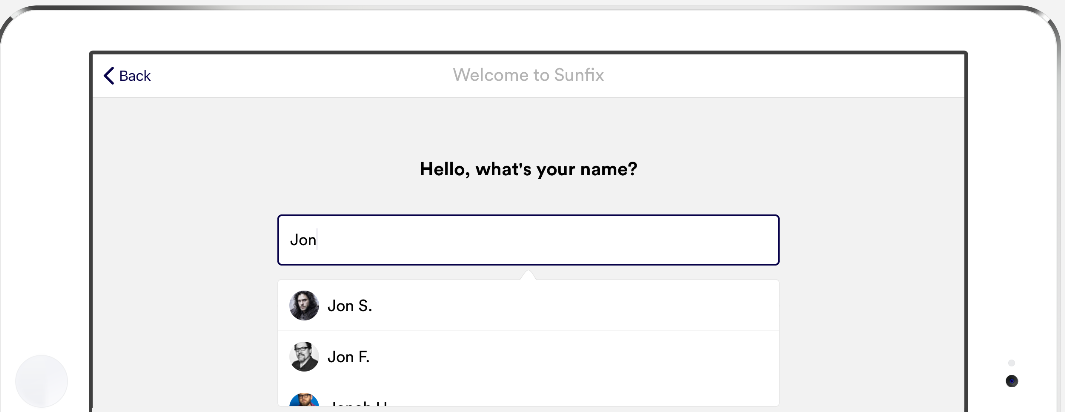Now that the new year dust has finally settled, our first wave of new features and integrations takes the stage.
And we’re delighted to announce that a new visitor status is born!
On-site Status joins the Dashboard—the fourth visitor status in the host experience—to be used as another layer of security and compliance. Also sharing the spotlight this month is Enterprise User Provisioning, for those organizations craving extra flexibility in managing multiple locations.
To complement these leading features, we’ve also launched integrations with Google Drive, Cisco Webex, and Google Suite to help you better shape the integrated visitor experience.
On-site status fills the gap between Expected and Checked-in
We’ve all had experiences of first having to go through a metal detector or flash our driver’s license before ever being greeted by name. It’s a sign of the times, but also an opportunity to ensure safety for everyone on premises by implementing an extra layer of security.
We recognized that the existing 3 statuses (i.e., Expected, Checked-in, Checked-out) on the Dashboard were no longer enough for everyone. Organizations come in all shapes and sizes, pun-intended, so it’s only natural that states of limbo can occur in a visitor’s journey.
Accordingly, some businesses (maybe yours) can now opt-in for a fourth status that falls between Expected and Checked-in—namely, On-site, which would capture those visitors who are:
-
Physically On-site (e.g., on a campus or multi-tenant building) but not yet fully Checked-in, whether they be in the parking lot or in the ground floor lobby, for the sake of proximity or security.
-
Visually verified via some form of ID or other documentation, passing a manual security check.
Settings can be configured in the Dashboard so you can better anticipate the timing of your visitors’ check-ins while staying in control of which step triggers which status. You’ll be rest assured that proper safety measures have been followed before the warm greetings and handshakes can ensue.
 (See our Help Center article for more information about the On-site status.)
(See our Help Center article for more information about the On-site status.)
Enterprise User Provisioning streamlines multi-location management
What do you get when you combine user provisioning with the need to manage multiple locations? Well, you get Enterprise User Provisioning (Enterprise UP)!
Instead of manually allocating one user provisioning per location, now it’s possible to assign users to the right location based on attributes (e.g., city, country, phone number, manager). In addition to saving you time and providing flexibility, this Enterprise UP also drastically reduces the margin of human error.
If, let’s say, your organization has offices in Germany and across the States, then:
-
You can easily allocate all your employees in Germany to every German location using the country attribute “Germany.”
-
Or, you could allocate your U.S.-based users by individual city attributes, or even direct reporting managers.
What’s important to note is that Enterprise UP is also possible using our API.
Other featured improvements to the host and visitor experience
- Confidential Visitor Dropdown has been launched to protect the privacy of returning visitors. Instead of having their full names auto-fill on the iPad kiosk screen as they type, they will be able recognize themselves quickly by their first name and corresponding picture. (Read more about our commitment to GDPR and data privacy ).

-
Among the exciting new integrations here at Proxyclick are those with Google Drive, Cisco Webex, and Google Suite—all major players in their own right. If you haven’t already, then you’re very welcome to dive right into our Marketplace.
In the meantime, here are the high-level benefits each integration affords you:
-
Google Drive: Connect Proxyclick to securely and automatically store, access. and share legal agreements that your visitors have signed during the check-in process.
-
Cisco Webex: This integration will allow Proxyclick users to receive check-in notifications via Cisco Webex .
-
Google Suite: Single Sign-On (SSO) and User Provisioning are now supported for Google Suite (Help Center article here).
We’d be remiss if we didn’t thank our generous admins, all over the world, for sharing their valuable feedback to help us set the tone for a secure and stable new year!